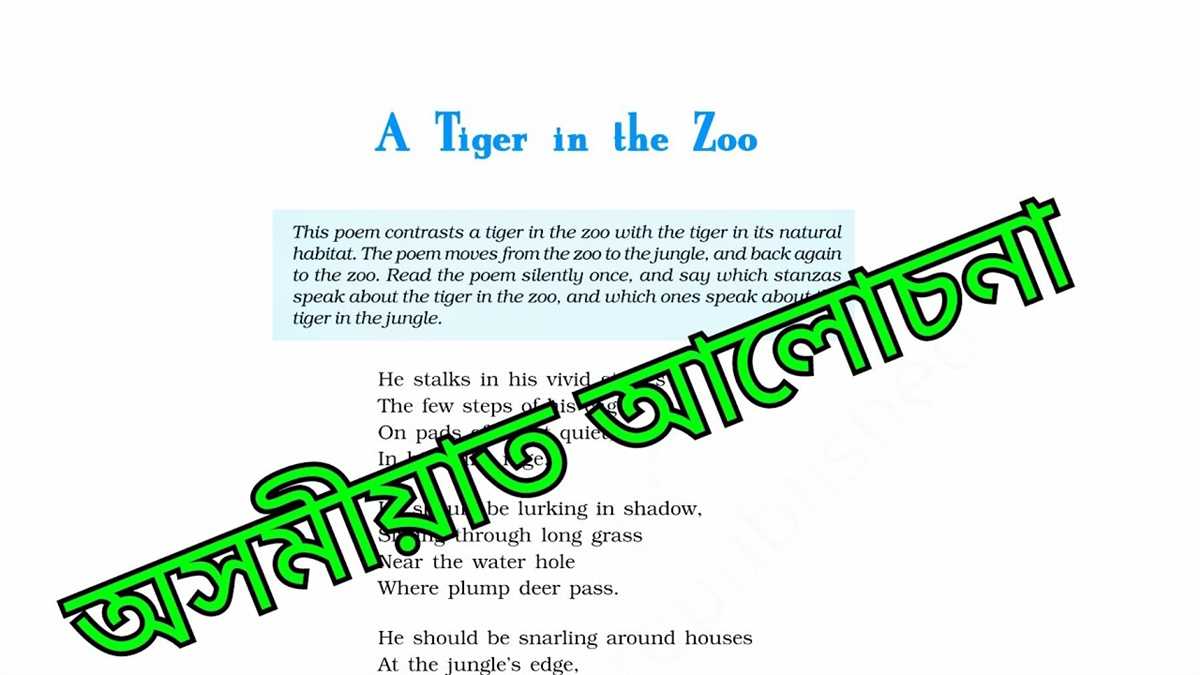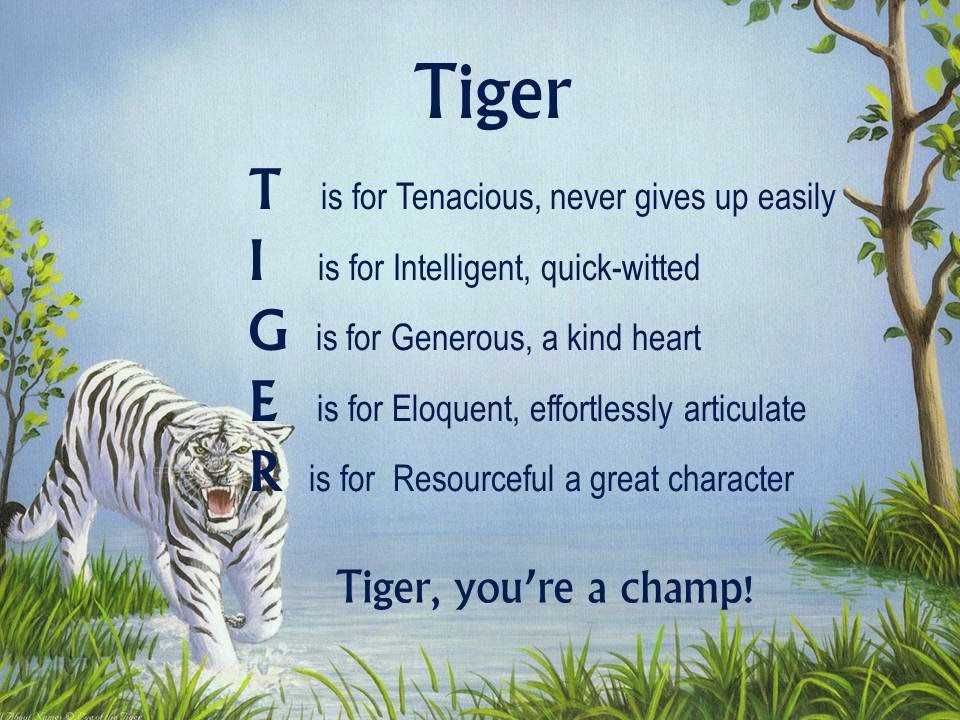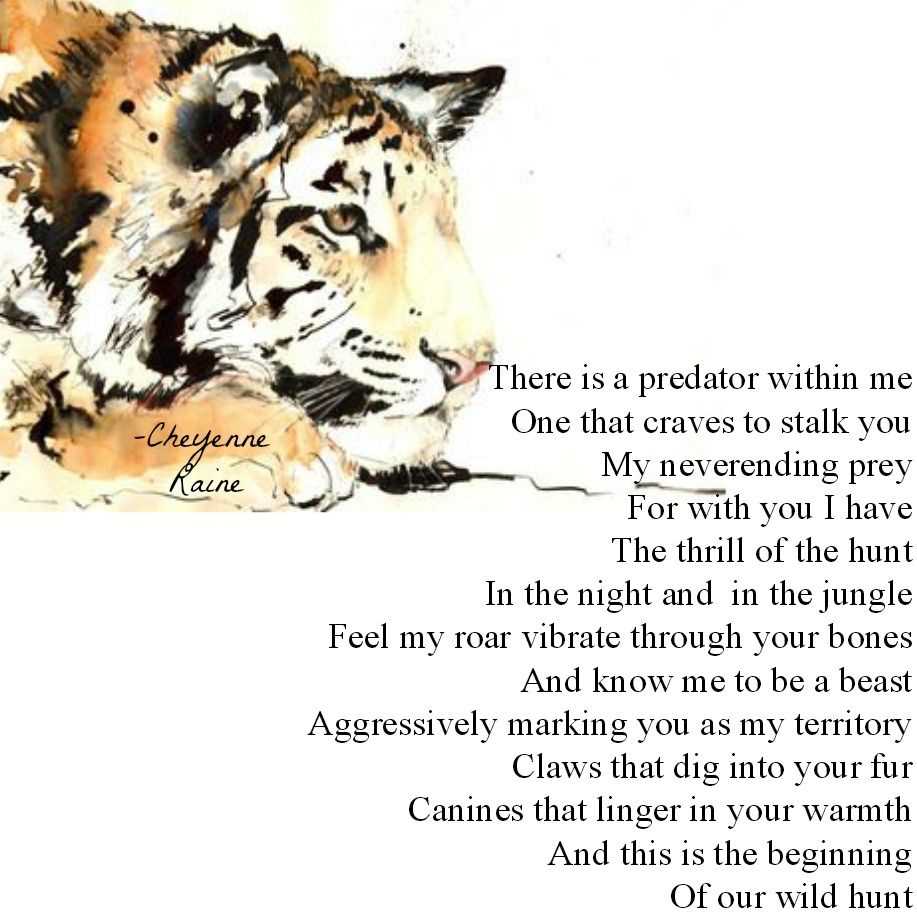
The Tyger is a renowned poetic masterpiece written by William Blake, an influential English poet, and artist of the Romantic era. This thought-provoking poem explores themes of creation, existence, and the paradoxes of life. With its powerful imagery and rich symbolism, The Tyger raises numerous questions that continue to intrigue readers and provoke intellectual discourse.
One of the central questions posed in The Tyger is the origin of evil and the existence of a benevolent creator. Blake ponders on the nature of a being that could create such a fearful and menacing creature like the tyger. The poem juxtaposes the tyger’s ferocity and beauty, leading readers to question the divine purpose behind such a creation.
Another question that emerges from The Tyger is the duality of human nature. Blake explores the concept of good and evil existing within each person, echoing the biblical idea of the fall of man and the capacity for both sin and redemption. The poem invites readers to reflect on their own inner conflicts and the potential for transformation.
Furthermore, The Tyger encourages contemplation on the nature of artistic creation. Blake’s use of vivid imagery and rhythmic language evokes a sense of awe and wonder, leaving readers to question the role of art in expressing complex ideas and emotions. The poem invites us to consider the power of imagination and the ability of art to capture the ineffable aspects of the human experience.
In this article, we will delve into these questions posed by The Tyger and provide answers that shed light on the poem’s deeper meanings. By examining the historical context, literary techniques, and philosophical implications, we aim to provide a comprehensive analysis that will enhance readers’ understanding and appreciation of this timeless work.
The Tyger Poem Questions and Answers PDF
The poem “The Tyger” by William Blake is a thought-provoking exploration of the nature of creation and existence. It raises profound questions about the origins of evil and the complexities of the world we live in. Here are some common questions and answers about this famous poem:
1. What is the main theme of “The Tyger”?
The main theme of “The Tyger” is the mystery of creation and the existence of evil in the world. Blake ponders how a benevolent creator could also bring forth a creature as powerful and terrifying as the tiger.
2. What is the structure of the poem?
The poem consists of six quatrains (stanzas with four lines each) and follows a regular rhyme scheme of AABB. This structure adds to the poem’s musicality and rhythm, enhancing its impact on the reader.
3. What is the significance of the tiger in the poem?
The tiger symbolizes both the beauty and destructiveness of the natural world. It represents the paradox of creation, as something so magnificent can also be a force of destruction. The tiger also serves as a metaphor for the coexistence of good and evil.
4. What does the poem suggest about the nature of God?
The poem suggests that God is not purely good or purely evil, but rather a combination of both. It questions how a divine being could create such a powerful and fearsome creature, highlighting the complexity and incomprehensibility of God’s nature.
- 5. What is the tone of the poem?
The tone of the poem is a mix of awe, wonder, and existential questioning. Blake’s use of vivid imagery and rhetorical questions creates a sense of mystery and contemplation throughout the poem.
6. What emotions does the poem evoke in the reader?
“The Tyger” can evoke a range of emotions in the reader, including awe, fear, and a sense of wonder. The contrast between the beauty and ferocity of the tiger creates a sense of awe and admiration, while also instilling a certain level of fear and reverence.
Overall, “The Tyger” is a deeply philosophical poem that raises profound questions about the nature of creation and the complexities of the world we inhabit. It invites readers to delve into the mysteries of existence and reflect on the inherent paradoxes of life and divinity.
Understanding The Tyger Poem
The Tyger is a famous poem written by William Blake, one of the prominent figures of the Romantic movement in English literature. The poem explores the concept of good and evil through the imagery of a tiger. It raises profound questions about the nature of creation, the existence of God, and the existence of evil in the world. Through powerful and vivid language, Blake invites readers to delve into the depths of their own understanding, challenging traditional notions of beauty and questioning the morality of creation.
The poem begins with the compelling question: “Tyger Tyger, burning bright, In the forests of the night.” The use of repetition and vivid imagery immediately captures the reader’s attention, evoking a sense of mystery and wonder. The poem continues with a series of rhetorical questions, each one delving deeper into the nature of the tiger and the forces that have shaped it.
What immortal hand or eye Could frame thy fearful symmetry?
These lines reflect Blake’s fascination with the concept of creation and the divine. He questions whether a benevolent creator could be responsible for such a powerful and awe-inspiring creature. Is the tiger’s beauty and strength a result of divine craftsmanship, or is there a darker power at play? Blake wrestles with the duality of good and evil, exploring the notion that beauty and destruction can coexist in the natural world.
In conclusion, The Tyger is a thought-provoking poem that challenges readers to question the nature of creation and the existence of evil. Through its powerful imagery and rhetorical questions, the poem explores the complexities and contradictions of the human understanding of good and evil. The poem serves as a reminder of the mysteries and wonders of the natural world, and the eternal struggle between light and darkness.
An analysis of “The Tyger” poem
“The Tyger” is a famous poem written by William Blake, first published in 1794. In this poem, Blake reflects on the nature of God and his creations. The poem raises questions about the origin and purpose of evil and the existence of a divine being capable of creating something as fierce and destructive as a tiger. Through vivid imagery and thought-provoking questions, Blake explores the complex relationship between good and evil.
The poem begins with the question: “Tyger! Tyger! burning bright, In the forests of the night, What immortal hand or eye, Could frame thy fearful symmetry?” Here, Blake contemplates the creation of the tiger, marveling at its beauty and power. The use of the exclamation “Tyger!” emphasizes the awe-inspiring nature of the creature. The repetition of the word “Tyger” also serves to emphasize the mystery and wonder surrounding its creation.
As the poem progresses, Blake poses a series of questions: “What the hammer? What the chain? In what furnace was thy brain? What the anvil? What dread grasp, Dare its deadly terrors clasp?” These questions evoke images of blacksmithing and creation, suggesting that the tiger was crafted by a skilled and powerful force. However, the poem leaves the identity of this force open to interpretation. Is it a divine being, or perhaps a representation of the human capacity for evil?
Throughout the poem, Blake explores the contrasting qualities of the tiger: “Did he smile his work to see? Did he who made the Lamb make thee?” Here, the poet questions whether the same creator could be responsible for both the lamb, symbolizing innocence, and the tyger, representing power and ferocity. This contrast highlights the duality of existence and the complexity of the human experience. Blake suggests that both good and evil are integral parts of the world, and it is ultimately up to humanity to navigate this duality.
In conclusion, “The Tyger” is a thought-provoking poem that raises questions about the nature of creation and the existence of evil. Through vivid imagery and powerful questions, Blake challenges the reader to consider the complexities of the world we live in and the role of humanity in navigating the duality of good and evil.
Symbolism in “The Tyger” Poem
“The Tyger” is a captivating poem written by William Blake that explores the concept of evil and the creation of both light and darkness. Throughout the poem, Blake uses symbolism to convey deeper meanings and provoke thought in the reader. One of the key symbols in the poem is the Tyger itself.
The Tyger, representing a powerful and fearsome creature, symbolizes both the bane and beauty in the world. It embodies the duality of nature, as it is both destructive and captivating. The Tyger is described with imagery that portrays its fiery and awe-inspiring nature, creating a sense of admiration mixed with fear. It symbolizes the existence of evil in the world, questioning how such a terrifying creature could have been created by the same divine force that created the innocent and gentle lamb.
Another symbol in the poem is the forge, which represents the creative process involved in bringing the Tyger into existence. The speaker wonders about the tools and methods used to create such a magnificent yet fearsome creature. The forge symbolizes the divine or artistic process of creation, emphasizing the complexity and mystery behind the existence of evil.
Furthermore, the stars mentioned in the poem symbolize the divine or spiritual realm. The speaker alludes to the Tyger’s creator as the one who could “frame thy fearful symmetry,” suggesting a higher power at work. The stars represent the vastness and mystery of the universe, serving as a reminder of the divine intelligence that is capable of bringing forth both good and evil.
In conclusion, “The Tyger” poem is laden with symbolism that invites readers to contemplate the existence of evil and the creative process behind it. The Tyger itself, the forge, and the stars all serve as powerful symbols that provoke deeper thoughts and questions about the nature of good and evil in the world.
Interpretation of The Tyger Poem

The Tyger poem by William Blake is a complex and thought-provoking piece of literature that explores the nature of creation and the existence of evil. The central question of the poem is how can the same creator, who made the gentle Lamb, also create the fierce and terrifying Tyger.
The speaker of the poem wonders who could have created such a powerful and fearsome creature. The repetitive question “Tyger Tyger, burning bright” emphasizes the speaker’s awe and fascination with the Tyger’s beauty and strength. The use of the word “burning” suggests both the Tyger’s intense fiery appearance and the potential destruction it can cause.
Blake uses vivid imagery to depict the Tyger and its creator. The symmetrical structure and repetitive lines reflect the industrialization of the time, as well as the dualistic nature of existence. The poem explores the contrasting themes of good and evil, innocence and experience, and the beauty and terror in the world.
The poet raises philosophical questions about the nature of evil and the moral implications of creation. He ponders whether the creator of the Tyger is the same as the creator of the Lamb, and if so, does this mean that both good and evil are necessary in the world? The poem suggests that evil exists as a necessary counterpart to good, and that both play a role in the grand design of the universe.
In conclusion, The Tyger poem invites readers to contemplate the mysteries of creation and the existence of evil. Through its powerful imagery and thought-provoking questions, the poem challenges traditional beliefs and forces us to confront the complexities and contradictions of the world we live in.
Comparison with The Lamb Poem

The poem “The Tyger” by William Blake is often compared with another one of his famous works, “The Lamb.” While “The Tyger” explores the darker and more mysterious aspects of creation, “The Lamb” focuses on innocence and simplicity. Despite their contrasting themes, these two poems share certain similarities in their exploration of the divine and the natural world.
Contrasting Themes: In “The Tyger,” Blake delves into questions of good and evil, illustrating the fierce and dangerous nature of the tyger. On the other hand, “The Lamb” depicts a gentle and innocent creature, emphasizing its connection to God and the idea of divine love. The contrast between these two poems allows for a deeper exploration of the human experience and the complexities of the natural world.
- Biblical Imagery: Both poems draw heavily on biblical imagery and symbolism. In “The Tyger,” the poem references the images of the lamb and the shepherd, which are closely associated with Christianity. Similarly, “The Lamb” connects the lamb to Jesus, portraying it as a representation of purity and sacrifice. These biblical references add depth and meaning to the poems, inviting readers to contemplate their own relationship with spirituality and the divine.
- Reflection on Creation: Both poems reflect on the act of creation and the role of the creator. In “The Tyger,” Blake questions the intentions and motivations of the creator who would create such a fierce and potentially dangerous creature. In “The Lamb,” the speaker marvels at the creation of the gentle lamb, recognizing the divine presence within it. Through these reflections on creation, Blake encourages readers to ponder the mysteries of existence and the complexities of the natural world.
In conclusion, while “The Tyger” and “The Lamb” have distinct themes and tones, they share common ground in their use of biblical imagery and their exploration of creation. Both poems offer profound insights into the human experience and the mysteries of the divine, inviting readers to contemplate the complexities of the natural world.
The Tyger Poem Study Guide
In this study guide, we have explored William Blake’s famous poem “The Tyger”. We have analyzed the themes, symbolism, and poetic devices used in the poem to gain a deeper understanding of its meaning. Through our examination, we have discovered that “The Tyger” delves into the complex nature of creation and the presence of evil in the world. The poem raises questions about the creator’s intentions and the duality of existence.
We have examined the central theme of the tiger as a symbol of power, awe, and mystery. The poem encourages us to contemplate the source of the tiger’s creation and the contrast between its beauty and its potential for destruction. Through its vivid imagery and rhythmic structure, the poem creates a sense of awe and wonderment, inviting the reader to ponder the mysteries of the universe.
William Blake’s use of poetic devices such as alliteration, repetition, and metaphor adds to the poem’s depth and complexity. The repetition of the question “Tyger Tyger, burning bright” emphasizes the enigmatic nature of the creature, while the use of alliteration in phrases like “fearful symmetry” and “distant deeps” creates a musical quality and enhances the overall tone of the poem.
In conclusion, “The Tyger” is a thought-provoking poem that explores profound philosophical questions about creation, beauty, and evil. Its rich imagery and powerful use of language make it a timeless piece of literature that continues to captivate readers. Through our study, we have gained a greater appreciation for William Blake’s poetic genius and the enduring relevance of his work.
Q&A:
What is the meaning of “The Tyger” poem?
The poem “The Tyger” by William Blake explores the concept of evil and the existence of God. It questions how a benevolent creator could also create a fierce and dangerous creature like the tyger.
What is the central theme of “The Tyger”?
The central theme of “The Tyger” is the coexistence of good and evil in the world, and the enigmatic nature of God’s creation.
What is the tone of “The Tyger” poem?
The tone of “The Tyger” is one of awe, fear, and wonder. It reflects the speaker’s astonishment at the creation of such a powerful and deadly creature.
Who is the speaker in “The Tyger”?
The speaker in “The Tyger” is not specified, but it is commonly believed to be a person contemplating the nature of God and his creation.
What does the tyger represent in “The Tyger” poem?
The tyger represents raw power, violence, and the darker side of creation. It symbolizes the existence of evil and the mystery behind God’s intentions.